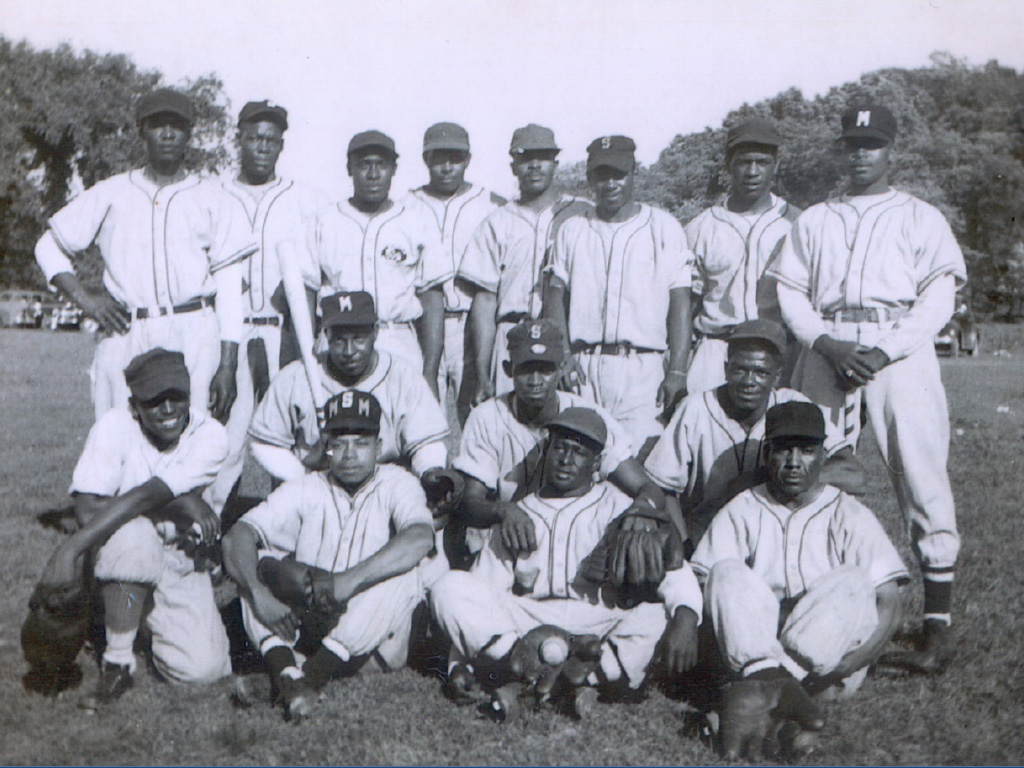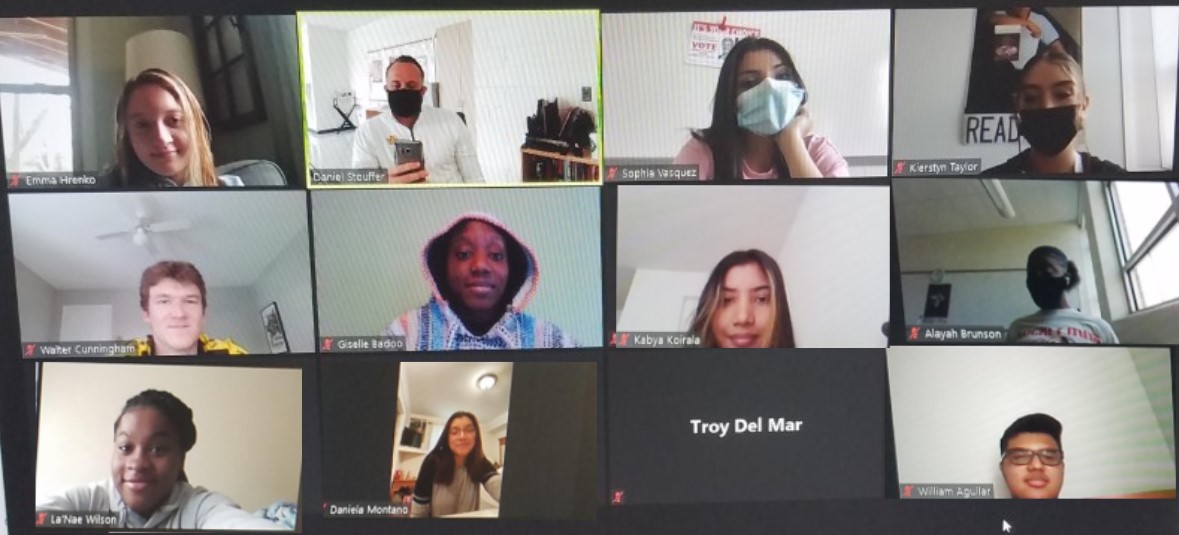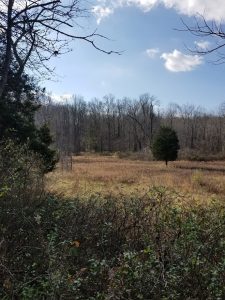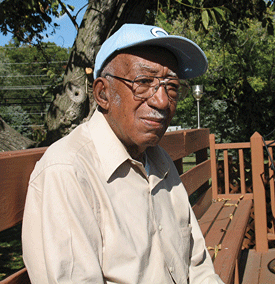
Montgomery County’s Linden Black Sox, undated. Many of the county’s African American communities established their own teams and ballfields.
Written by Kacy Rohn with Dan Stouffer, M.A.T, M.S.Ed and the Seneca Valley High School Leadership Class
Montgomery Planning’s Historic Preservation Office staff have recently engaged with a Seneca Valley High School class seeking further historic recognition for Wims Meadow, also known as Wims Field of Dreams, in Montgomery Parks’ Little Bennett Regional Park. The site was a ballfield for the county’s African American baseball teams at a time when racial segregation restricted social and recreational outlets for Black residents. The field, which is accessible from Western Piedmont Trail in Clarksburg, is often mowed in the general outline of the regulation baseball field that once existed, and a wooden, rectangular backstop stands nearby.
The class researched the ballpark’s history and took steps to officially document the site in historic registries and databases with the support of Montgomery Parks’ Cultural Resources staff. While the field was already marked with an interpretive sign developed by Montgomery Parks’ Cultural Resources Stewardship Section, the class completed a Maryland Inventory of Historic Properties (MIHP) form and hopes to designate the site to the county’s Master Plan for Historic Preservation.
The students’ experience reflects the value in identifying and highlighting local historic sites as a critical tool for engaging residents, including young people, in a dialogue about the past and future of our community landscapes. It is particularly notable that these students overcame the challenges of remote learning during the COVID-19 pandemic to lead this effort.
The following is an interview with instructor Dan Stouffer, M.A.T., M.S.Ed, and his Leadership Class students that has been condensed and adapted for this blog post.

Seneca Valley High School Leadership Class students in the virtual classroom. Photo credit: Daniel Stouffer.

Wims Meadow within Little Bennett Regional Park. Photo credit: Daniel Stouffer.
How did this project begin? How did the class become interested in this site?
Dan Stouffer (DS): Over the summer, my wife and I regularly selected outdoor sites that we could safely explore with our two children to provide them a physical outlet for their unbounding energy. Immediately, I thought about Little Bennett Regional Park, and the obscure gravel trail that led to Wims Meadow. [A]s we were exploring the site, I recognized that I could use it as a project-based learning opportunity to teach students how to affect change at the local and state level of government.
Leadership Class (LC): Mr. Stouffer’s third period Leadership Class at Seneca Valley High School is primarily focused on the aspects of being a strong leader, while solidifying life skills needed for whatever steps we take in our futures. [A]fter Mr. Stouffer shared information about the area and its history with us, our class was enveloped in the process of recognizing the field as historically significant.
What did the class discover?
LC: From researching the site to communicating with historical societies to meeting with local leaders, this project was a large undertaking. On top of that, this project was executed completely during virtual learning, making it even more difficult to feel like we were making a difference.
After researching all of the historical documents we could find about the site and those who founded it, our class learned even further how imperative the Field of Dreams was for the African American community in our area. James “Jim” Wims gave up land used for his crops in the early 1900s in order for his children to safely and freely express their love of baseball in a harsh and discriminatory world. Taking after his father, Francis Wilson Wims organized baseball games for the local community at the Field of Dreams after playing at the same field during his childhood years. Overall, the Wims Field of Dreams has been an inspiration for not only African American communities during its time of use, but for anyone who happens to stumble upon the site and can now dive into its history.

Francis Wilson Wims, a community leader whose father established Wims Field. Photo credit: Montgomery County Public Schools
Why would greater recognition of this site benefit the community?
LC: When working on a community project like this one, it is important to understand the implications of your work and how it makes a difference. For us, we viewed the recognition of this site as vitally important for the community to understand the complete story of African Americans in this county. When working on this project, we understood that, had nobody taken action to bring recognition to this historic site, it could have easily been forgotten or neglected. Just like that, an artifact of African American history could be lost forever. While it’s not the most impressive field in the world, it holds a deeper meaning of a united community during a time of division.
What are the long-term goals/next steps?
DS: [O]ur Maryland Inventory of Historical Properties form is under review by Montgomery Planning and the Maryland Historical Trust. Wims Field of Dreams has already been added to the Maryland Historical Trust website and was recently uploaded to Montgomery Planning’s storymap of Historic African American Places. We hope to officially document the site with their databases and registries.
While it has been empowering for students to see the product of their research, writing, and passion appear on governmental websites, we hope that it ultimately results in increased awareness, site visits, and pride in the resiliency, history, and contributions of African Americans in response to overt racial oppression. Additionally, I want this experience to reinforce the power of asking questions, setting goals, and impassioned action.
LC: [W]e recognize that you can’t bring too much attention to these historic sites, so we hope that our work inspires others to make a difference in the community, no matter how small the act.
If readers want to learn more or contact someone, who should they reach out to?
DS: To learn more or ask a question about our class project, please contact Daniel_C_Stouffer@mcpsmd.org.